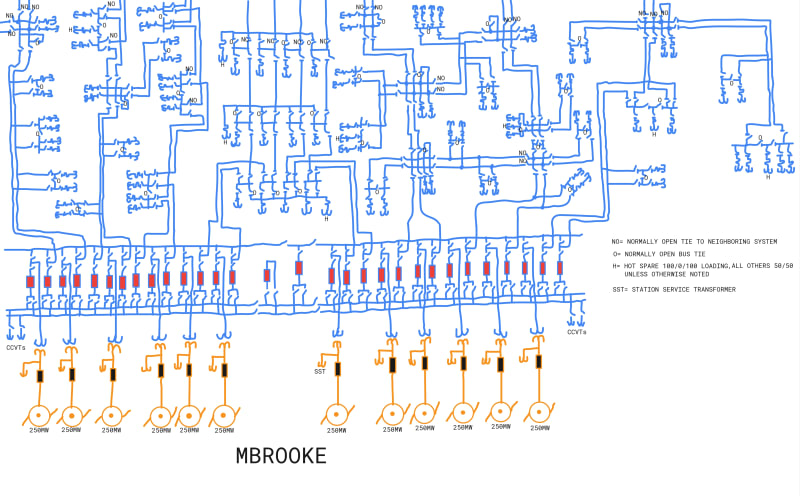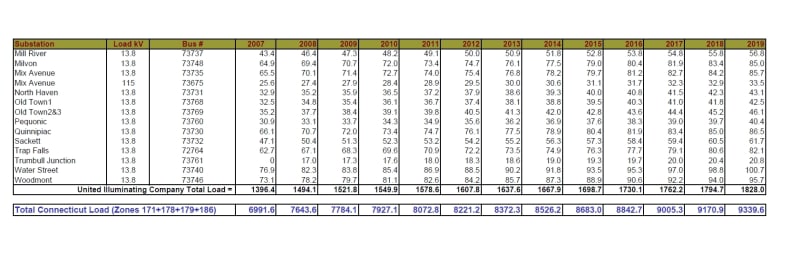Why are power systems so large and interconnected? For example, what technical obstacles prevents the US eastern interconnection from being 8 isolated islands? Why not separate them by ISO/RTO? Why does every power grid in the world strive to be as large as geography allows?
Navigation
Install the app
How to install the app on iOS
Follow along with the video below to see how to install our site as a web app on your home screen.
Note: This feature may not be available in some browsers.
More options
Style variation
-
Congratulations MintJulep on being selected by the Eng-Tips community for having the most helpful posts in the forums last week. Way to Go!
You are using an out of date browser. It may not display this or other websites correctly.
You should upgrade or use an alternative browser.
You should upgrade or use an alternative browser.
Why are Power Grids so Large? 5
- Thread starter Mbrooke
- Start date
- Status
- Not open for further replies.
At a supercritical steam plant, they are. (Coal or combined cycle gas turbine's steam bottoming cycle.)crshears said:-snip-
The "steam dump valves" are what I was referring to as Condenser Steam Discharge Valves [CDSVs]. Note that the duty on these valves is very severe, and designing one to have a long life is quite the challenge.
Nuclear power plants run sub-critical at much lower pressure. BWRs run around 1000-1100 PSI and PWRs run 900-1000PSI. The steam dump pressure drop is far lower and hence less erosive than a 3500 PSI steam pressure. At a PWR, stellite needles and seats are used and they last pretty long - usually many years. BWR plants had to come up with special material to eliminate the high cobalt content of stellite to prevent activation of the cobalt eroded from the seat and returned to the reactor.
Hey MatthewDB, I'm glad you chimed in; I do have some limited knowledge of nuclear plant power cycles, but I certainly have not had exposure to as wide a variety of the different types as you clearly have.
Thanks again for the contribution.
Incidentally...
Believe it or not, that's more or less the way it's done here; at certain times of the year, typically on nice weekends in the spring and fall, wind and solar may be available but constrained off due to Surplus Base Generation as the IESO prefers not to back down the running-at-full-snot nuclear generation unless it really must, and to stop the whining about revenue loss, the wind and solar sites are paid anyway via something called a Global Adjustment.
Addition via Edit:
Oh yeah! Forgot to say: Thanks, rcwilson, for that anecdote; that's just the kind of thing that used to happen in my province back in the day when we also had an integrated power system and the hydraulic generating station operators [who frequently also operated the local transmission and distribution networks] had a great deal more autonomy than they do today...bigger doesn't always necessarily mean better, particularly not when the base DNA / genetic code of the animal is re-written by creating multiple entities to do what one used to do all by itself...
Thanks again for the contribution.
Incidentally...
The way to look at it is that it is 95% as expensive as saying "I know the wind is blowing and your turbine is ready, but don't turn it on" or "I know it's a nice sunny day, but don't turn on your solar inverter."
Believe it or not, that's more or less the way it's done here; at certain times of the year, typically on nice weekends in the spring and fall, wind and solar may be available but constrained off due to Surplus Base Generation as the IESO prefers not to back down the running-at-full-snot nuclear generation unless it really must, and to stop the whining about revenue loss, the wind and solar sites are paid anyway via something called a Global Adjustment.
Addition via Edit:
Oh yeah! Forgot to say: Thanks, rcwilson, for that anecdote; that's just the kind of thing that used to happen in my province back in the day when we also had an integrated power system and the hydraulic generating station operators [who frequently also operated the local transmission and distribution networks] had a great deal more autonomy than they do today...bigger doesn't always necessarily mean better, particularly not when the base DNA / genetic code of the animal is re-written by creating multiple entities to do what one used to do all by itself...
- Thread starter
- #43
Would something like this be doable in nuclear? >>>


Look who's double posting now!!! ![[wink] [wink] [wink]](/data/assets/smilies/wink.gif)
I welcome MatthewDB's comments on my earlier posts of 3 January and following, all of which I still believe to be apropos...
Applying the question to the CANDU and CANDU-derivative nukes I'm at all familiar with, and from what I know of it, islanding just one nuke station with a bunch of load might be limitedly "do-able" in the short term, meaning for probably no more than a few days; probably shorter with "sky valves" [nice colloquialism for atmospheric steam discharge valves or ASDVs, by the way] and perhaps a bit longer with CSDVs, but certainly not sustainable in the long term under any circumstances.
CR
"As iron sharpens iron, so one person sharpens another." [Proverbs 27:17, NIV]
![[wink] [wink] [wink]](/data/assets/smilies/wink.gif)
I welcome MatthewDB's comments on my earlier posts of 3 January and following, all of which I still believe to be apropos...
Applying the question to the CANDU and CANDU-derivative nukes I'm at all familiar with, and from what I know of it, islanding just one nuke station with a bunch of load might be limitedly "do-able" in the short term, meaning for probably no more than a few days; probably shorter with "sky valves" [nice colloquialism for atmospheric steam discharge valves or ASDVs, by the way] and perhaps a bit longer with CSDVs, but certainly not sustainable in the long term under any circumstances.
CR
"As iron sharpens iron, so one person sharpens another." [Proverbs 27:17, NIV]
Fascinating Matthew! Insane 6 hours to taper 10%!! And, thanks ALL for the this interesting conversation.
Perhaps they should start paring nukes with atmospheric CO2 scrubbers. Whenever the load starts tapering crank up the scrubbing.
Keith Cress
kcress -
Perhaps they should start paring nukes with atmospheric CO2 scrubbers. Whenever the load starts tapering crank up the scrubbing.
Keith Cress
kcress -
- Thread starter
- #46
- Thread starter
- #47
Here is the load graph for New England and the US State of Connecticut:
The highs and lows are not as major as one would assume IMO.
Total estimated 2019 peak load for the small state is 9339.6 MWs.

In theory all of New England could operate in an isolated mode with its present generation fleet. Its ties to NY and Canada are rather weak.
The highs and lows are not as major as one would assume IMO.
Total estimated 2019 peak load for the small state is 9339.6 MWs.

In theory all of New England could operate in an isolated mode with its present generation fleet. Its ties to NY and Canada are rather weak.
- Status
- Not open for further replies.
Similar threads
- Replies
- 4
- Views
- 7K
- Locked
- Question
- Replies
- 2
- Views
- 2K
- Replies
- 11
- Views
- 5K
- Question
- Replies
- 2
- Views
- 5K
- Locked
- Question
- Replies
- 6
- Views
- 734
